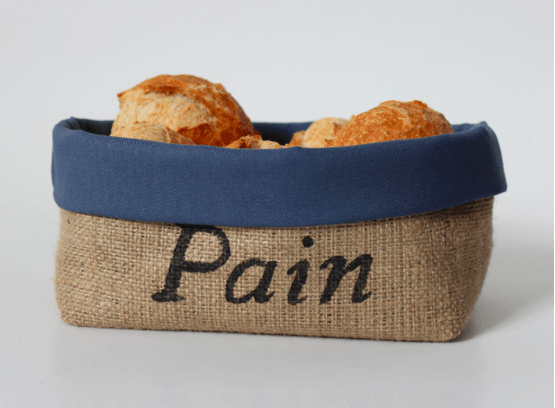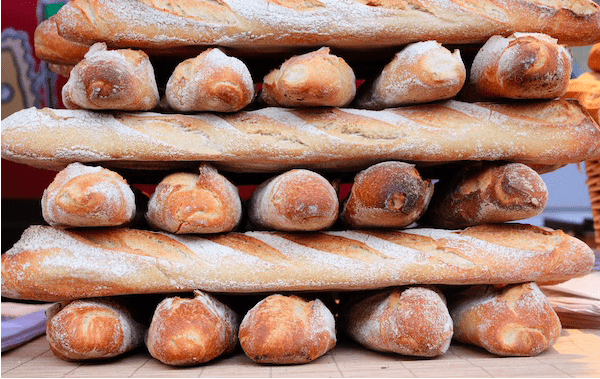Read our pain-free guide to landing the perfect baguette in France.
During a recent visit from my teenage nephew, on his first trip to France, an item in my kitchen earned a healthy chuckle from this otherwise staid young man. One morning he stumbled bleary-eyed to the breakfast table, and was tickled to read the embroidered linen napkin lining our bread basket: PAIN. “In France,” I facetiously explained, “we serve up healthy doses of pain at every meal!” It had never occurred to me how strange this cross-lingual homograph must seem to English-speakers. What do they make of the lines of Parisians waiting for their daily pain at boulangeries across the city?
Bread is such a fundamental part of French culture that the word for friend, copain, literally means someone you break bread with (and not, as my nephew thought, someone who shares your pain). Far from a painful experience, mealtime is one of the great pleasures of French life. But for foreigners, the simple act of buying bread can be a challenge. So, to take the pain out of pain, here is a brief guide to buying bread in France.

The most classic of French breads is the baguette, a long baton of bread made of just four ingredients: wheat flour, water, salt and yeast. The most popular kind is the tradi (pronounced trad-ee with a short a), which is short for baguette traditionnelle. It differs from the less expensive baguette ordinaire in that it is hand-formed, baked on the premises, and usually has a natural sourdough starter. It is not unusual to ask for a half of a baguette (une demie baguette), sold for exactly half the price, and you can even specify if you want it well-done (bien cuite) or not too cooked (pas trop cuite) depending on how crusty you like it. A baguette has no preservatives, and goes stale within 24 hours, hence those lines for buying one’s daily bread.
No French person can honestly claim to have never succumbed to the temptation of biting into the end of a fresh baguette before reaching home. Those paper sheaths baguettes are wrapped in seem designed to invite munching on the quignon (pronounced kin-yon), which is the name for the ends of baguettes (yes, they have a name)! At the table, traditionally the baguette is hand-torn, not cut, and used to push food onto your fork. Butter is not part of the baguette experience, except at breakfast, when a thick layer is spread on before dollops of confiture (jam).

Any other bread besides the baguette is usually referred to as pain, and comes in all shapes, sizes and flavors. For a Wonderbread-like experience, go for a pain de mie, which is usually rectangular with a soft crust, perfect for sandwiches à l’américaine. If you like grainy breads, you want a pain aux céréales, which comes in every shape imaginable, including the baguette. For rye, ask for a pain de seigle. If only wholewheat will do, a pain complet is what you want.
And then there is, of course, the croissant, that deceptively light and flaky taste of heaven in the shape of a crescent. Legend has it that the French croissant evolved from an original crescent-shaped pastry in Austria in the 17th century, created to celebrate that city’s victory over invading Ottomans, whose flag featured a crescent. For the real deal, ask for a croissant au beurre (butter croissant), otherwise you may be getting one made with margarine. To sweeten things up, opt for a pain au chocolat, which is basically a rectangular croissant filled with a narrow tunnel of chocolate.
Finally, everybody knows that Marie Antoinette never said “Let them eat cake” in response to the complaint that the people had no bread to eat. Her cocky comment was almost certainly, if she said anything like it at all, “Let them eat brioche.” For the French are not cake-eaters. Brioche, on the other hand, is a soft-as-a-cloud bun, roll or loaf made of more perishable, and therefore more luxurious, ingredients: flour, yeast, eggs and butter. Incidentally, it makes great French toast, which is not French at all.

Bon appétit, les copains!





